Latest News
-
 AF-36C
&
AF-51C
Cryogenic
Ball Valves passed BS 6364 Cryogenic Test AF-36C
&
AF-51C
Cryogenic
Ball Valves passed BS 6364 Cryogenic Test
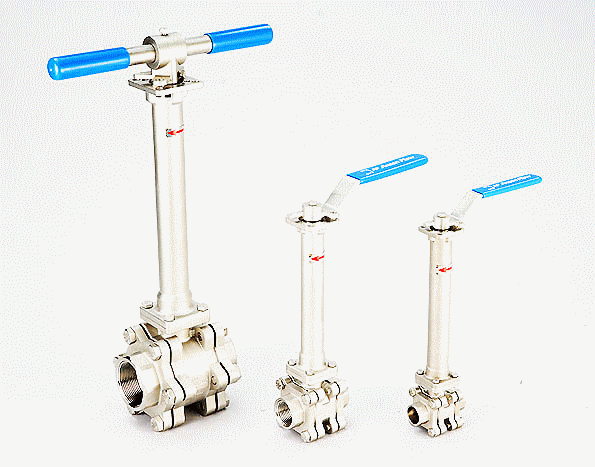
-
This testing requires immersion in
liquid nitrogen @-321F for one hour, then (20) cycles at full rated
pressure (2000 psig) with helium as a test gas, then valve is tested
for both external & across-valve leakage with helium...
 AF-60
Sanitary
& High
Purity Ball Valves
for gas or processing cooling water in
Semiconductor, pharmaceutical or food Industry. AF-60
Sanitary
& High
Purity Ball Valves
for gas or processing cooling water in
Semiconductor, pharmaceutical or food Industry.
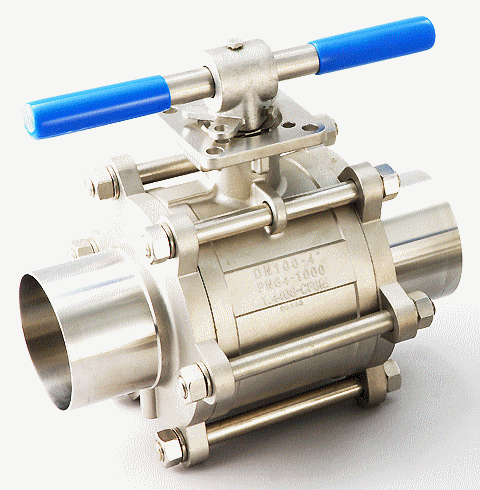
 Spring
Return Handle
Ball Valves
Spring Return Closes valves when not held open providing
safety for applications that requires positive closure. Locking
device lock the valve in preferred position. Spring
Return Handle
Ball Valves
Spring Return Closes valves when not held open providing
safety for applications that requires positive closure. Locking
device lock the valve in preferred position.
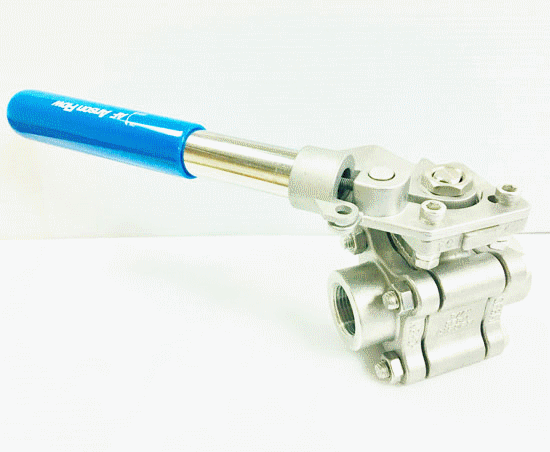
 AF-51F
150 ~ 300#
Flanged
Direct Mount
Ball Valves
Firesafe certified to API
607 7th Edition. AF-51F
150 ~ 300#
Flanged
Direct Mount
Ball Valves
Firesafe certified to API
607 7th Edition.
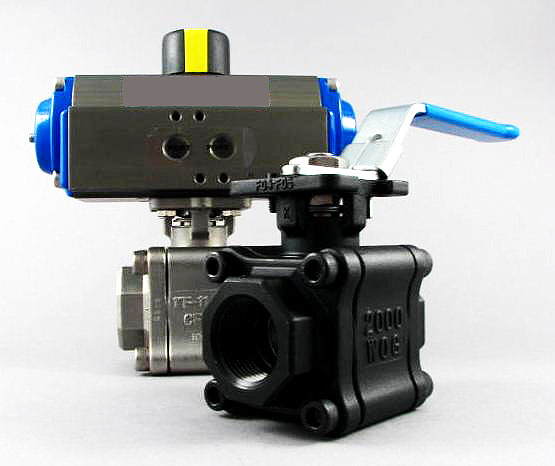
 AF-35
2000 PSI
3-pc
Direct Mount
Ball Valves
Firesafe
certified
to API 607 7th Edition. AF-35
2000 PSI
3-pc
Direct Mount
Ball Valves
Firesafe
certified
to API 607 7th Edition.
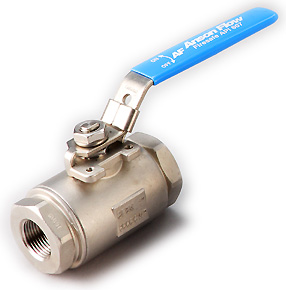
 AF-291
6,000 PSI
High Pressure Ball Valve
Seal Welded,
ISO 5211 mounting,
Delrin Seat.
Locking Handle or Bare Stem for
Actuation.
Option:
Firesafe to API 607
5th Edition. AF-291
6,000 PSI
High Pressure Ball Valve
Seal Welded,
ISO 5211 mounting,
Delrin Seat.
Locking Handle or Bare Stem for
Actuation.
Option:
Firesafe to API 607
5th Edition.
Contact
Anson
for
details.
adDress
Anson Flow Corp.
7F-2, No. 408, Nantun
Rd., Sec.2, Taichung City 408 438, Taiwan
Phone: +886 4
2472 0998
Fax:
+886
4
2473 4240
E-Mail:
sales@ansonflow.com
|
Quality
Investment Castings
for a wide variety of OEM markets
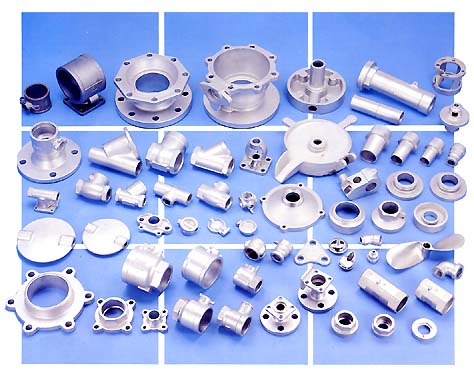 |
|
Investment
casting has, with no doubt, earned it's place in manufacturing. The
lost-wax process has proven to be a cost effective way to produce metal
components. Parts can be reduced in weight, tolerances of 0.010" or
0.13mm per inch held, The average micro finish is 125 rms, with the
range for the process being between 60 and 120, depending upon the
limitations of the metal, and expenses and time involving machining and
finishing reduced or eliminated.
Our commitment is
to produce high quality castings. It takes a well planned facility, the
right equipment, and well trained people dedicated to quality to achieve
consistent results. It can be always told in our final product. The
lost-wax process provides unique opportunities for engineers and
designers. Intricate structures can be created with minimum or no
secondary machining operations.
|
Quantities:
|
50 pcs to 10,000 pcs |
|
|
-
Prototype delivery as little as 3 weeks
|
|
Metals: |
Poured: iron, nickel and cobalt base
alloys: |
|
|
-
Carbon & Low Alloy Steels
-
400 Series Stainless Steel
-
300 Series Stainless Steel
-
Precipitation hardening Stainless Steel
-
Tool Steels
-
Cobalt Base Alloys
-
Nickel Base Alloys Alloy Cast Iron
|
|
Weight:
|
Up to 45 kgs. depending upon part configuration |
|
Size:
|
Up to 18" x 18" x 18", to 24" length in some cases. |
|
Process:
|
Lost-Wax process, shell method |
|
Capability:
|
We employ the latest production
and testing technology to assure high quality at a competitive price.
Customers can find every necessary special service: pattern-making, heat
treating, machining, CAD/CAM, rapid prototyping, physical and chemical
analysis, magnetic particle penetrant inspection, x-ray, dye checking,
microstructure evaluation, mechanical and non-destructive testing, alloy
control, lab services, microscopic analysis testing, design and layout
services. |
|
Applications: |
- Compressors
- Valves
- Pumps & Impellers
- Propellers
- Automotive
- Food Processing
- Hand Tools
- Machine Parts
- Hardware
- Golf Clubs
- Marine Hardware
- Marine Parts
- Medical
- Packaging
- Pneumatic Tools
|
Investment Casting Process

|
|
Wax which conforms to complex cavities and intricate exteriors is
injected into precisely tooled dies which, while accounting for both wax
expansion and metal contraction, yield finished tolerances of ?.0057.
|
|
The resulting wax patterns are assembled on a tree, or sprue, which
provides the gates through which the molten metal will be poured.
|
|

|

|
|
The tree is dipped repeatedly into ceramic investment, strong enough to
handle molten metal but pourous enough to allow air to escape, thus
preventing voids. |
|
After the wax is burned out of the ceramic mold, hence the term "lost
wax," molten metal is poured into the resulting pattern at up to
3,000°F. |
|
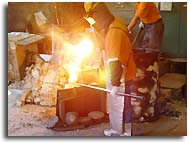
|
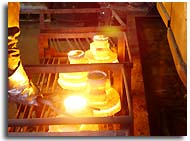
|
|
The heat of the casting alters the ceramic chemistry so the mold
crumbles away after cooling. Gates are then cut off and the part is
cleaned. |
|
Finished parts are checked
for allowable tolerances. Non-destructive testing, X-ray, magnetic particle and penetrating dye
inspections are available. |
|
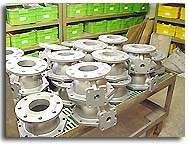 |
|
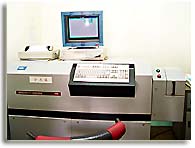 |
|
Final Quality Inspection:
Specialized technician examines dimensions, hardness and microstructure
by hardness test, tensile test, & impact test to ensure quality
conformance to specification. Material Certificate & Inspection Report
is issued accordingly. |
|
 |
|

